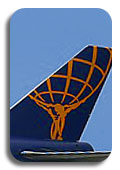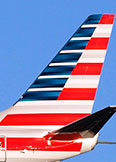China Airlines struggles to get airborne
Balanced field takeoff is the theoretical principle whereby the critical engine failure recognition speed, or V1, is used as a decision speed at which the pilot elects whether to continue the takeoff. The concept at play is that, by reducing takeoff thrust, all available runway is used in the event of a rejection at or near V1. This practice has been the subject of increased scrutiny as a result of certain recent accidents in the aviation industry.
One example is the crash of MK Airlines Flight 1601, a Boeing 747-244SF cargo aircraft that crashed on takeoff killing all seven crew members. As a result, the Transportation Safety Board of Canada issued a formal recommendation to equip transport category aircraft "with a take-off performance monitoring system that would provide flight crews with an accurate and timely indication of inadequate take-off performance."
To safely complete a takeoff, the aircraft must reach a speed of V1 prior to any engine failure. However, the probability of engine failure increases with the power setting selected, and it is therefore advantageous to reduce the power setting. Performance charts and flight computers are used to determine a power setting that will allow acceleration to V1 such that there remains enough runway to stop safely in the event of an engine failure prior to V1, or to continue flight in the event of an engine failure subsequent to reaching V1.
Landing and Takeoff Performance Monitoring Systems are devices aimed at providing to the pilot information regarding the effectiveness of the balanced field concept, and averting runway overruns that occur in situations not adequately addressed by the balanced field approach.
Using the balanced field takeoff concept, V1 is the maximum speed in the takeoff at which the pilot must take the first action (e.g. reduce thrust, apply brakes, deploy speed brakes) to stop the airplane within the accelerate-stop distance and the minimum speed at which the takeoff can be continued and achieve the required height above the takeoff surface within the takeoff distance.
Also, Accelerate-Stop Distance:
Sec. 25.109 - Accelerate-stop distance.
(a) The accelerate-stop distance on a dry runway is the greater of the following distances:
(1) The sum of the distances necessary to --
(i) Accelerate the airplane from a standing start with all engines operating to VEF for takeoff from a dry runway;
(ii) Allow the airplane to accelerate from VEF to the highest speed reached during the rejected takeoff, assuming the critical engine fails at VEF and the pilot takes the first action to reject the takeoff at the V1 for takeoff from a dry runway; and
(iii) Come to a full stop on a dry runway from the speed reached as prescribed in paragraph (a)(1)(ii) of this section; plus
(iv) A distance equivalent to 2 seconds at the V1 for takeoff from a dry runway.
(2) The sum of the distances necessary to --
(i) Accelerate the airplane from a standing start with allengines operating to the highest speed reached during the rejectedtakeoff, assuming the pilot takes the first action to reject thetakeoff at the V1 for takeoff from a dry runway; and
(ii) With all engines still operating, come to a full stopon dry runway from the speed reached as prescribed in paragraph(a)(2)(i) of this section; plus
(iii) A distance equivalent to 2 seconds at the V1 for takeoff from a dry runway.
(b) The accelerate-stop distance on a wet runway is the greater of the following distances:
(1) The accelerate-stop distance on a dry runway determined in accordance with paragraph (a) of this section; or
(2) The accelerate-stop distance determined in accordance withparagraph (a) of this section, except that the runway is wet and thecorresponding wet runway values of VEF and V1 are used. In determining the wet runway accelerate-stop distance, the stopping force from the wheel brakes may never exceed:
(i) The wheel brakes stopping force determined in meeting the requirements of §25.101(i) and paragraph (a) of this section; and
(ii) The force resulting from the wet runway braking coefficientof friction determined in accordance with paragraphs (c) or (d) of thissection, as applicable, taking into account the distribution of thenormal load between braked and unbraked wheels at the most adversecenter-of-gravity position approved for takeoff.
(c) The wet runway braking coefficient of friction for a smoothwet runway is defined as a curve of friction coefficient versus groundspeed and must be computed as follows:
-

Hawaiian Airlines 04/16/2024
-

iAero Airways 04/16/2024
-

Atlas Air 04/16/2024
-

American Airlines 04/15/2024
-

JetBlue Airways 04/15/2024
 AIRLINE PILOT CENTRAL
AIRLINE PILOT CENTRAL